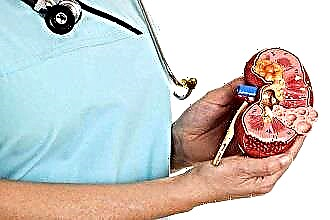Warming up the nose in various ways is often recommended for respiratory diseases accompanied by tissue edema, such as acute respiratory infections, acute respiratory viral infections, and runny nose. Dry heat has a positive effect on human health. It is recommended to treat sinusitis and sinusitis with heating. There are several options for such therapy: Minin's reflector, boiled chicken egg, paraffin wax. Let's consider further whether it is possible to warm the nose with salt for sinusitis and how to do it correctly.
Warming up the nose with sinusitis: benefits and harms
 Mankind has been familiar with sinusitis for hundreds of years, scientists and doctors have developed the most modern schemes for combating this disease. Medical practice has proven that the most effective ways to quickly and without consequences overcome the disease are:
Mankind has been familiar with sinusitis for hundreds of years, scientists and doctors have developed the most modern schemes for combating this disease. Medical practice has proven that the most effective ways to quickly and without consequences overcome the disease are:
- complex drug treatment, including antibiotic therapy, the use of decongestants (vasoconstrictor drops), mucolytics, analgesics, antiviral and antiseptic drugs;
- surgical intervention, used in the presence of a large number of purulent masses and the threat of complications (puncture, sinusitis);
- traditional methods of treatment based on the healing powers of plant and animal raw materials (herbs, propolis, minerals, etc.)
The best effect is provided by the complex use of traditional and traditional medicine, which is developed by an otolaryngologist, based on the indications for each specific patient.
Patients often ask the question whether it is possible to warm sinusitis with salt and whether it will worsen their condition. It is safe to say that the treatment of sinusitis with salt is an excellent auxiliary method to traditional drug therapy. It helps both to prevent the transition from the catarrhal stage of the disease to the acute one, and to restore the affected epithelium of the accessory chambers at the stage of recovery.
The main thing is not to self-medicate, adhere to certain rules and coordinate your actions with your doctor.
There are various ways to heat up your sinuses to speed up your sinuses at home:
- hard-boiled chicken eggs in shells;
- Minin reflector (famous blue lamp);
- steam inhalation with various additives;
- bags of hot salt or small cereals;
- Bioptron apparatus;
- facial massage in the projection of the accessory pockets.
In what cases it is possible to carry out heating, and in what cases it is impossible
Salt for sinusitis plays an important role in the fight against the disease. It is used in various forms: it is used as a basis for creating solutions for nasal irrigation or as a means for warming up the maxillary sinuses. The most important quality is that salt is a very cheap and readily available product, it is in every kitchen, you can buy it in a store or pharmacy. If you use sodium chloride as directed by your doctor, there will be no harm to your body.
Warming up with dry heat can be done in several cases:
- For prophylaxis in case of hypothermia or when a person feels that a person is starting to get sick. You can stop the disease using the usual home methods: an abundant warm drink, warming up the sinuses with a bag of salt, a hot bath.
- In the early stages of catarrhal sinusitis, as an adjunct to conventional drug therapy. This will help ease symptoms and prevent bacterial flora from becoming attached. The method can be applied only after the ENT confirms that the fistulas are open and mucus does not accumulate in the sinuses.
- After the end of the purulent acute stage of the disease, when the pathogenic microflora has already been destroyed, purulent accumulations are removed from the paranasal cavities naturally or with the help of puncture, the drainage of the sinuses is restored, and the symptoms are weakened. In this case, dry heat helps to improve blood microcirculation in the sinus tissues, increase local immunity, restore the epithelium and consolidate the results of traditional therapy, preventing the transition of the disease to a sluggish stage.
However, all the positive aspects of sodium chloride will be completely eliminated if it is used in some conditions. Warming up is contraindicated in such cases:
- The acute course of the disease with the formation of pus in the sinuses. Under the influence of heat, the reproduction of bacteria will accelerate, and purulent exudate in the adnexal chambers blocked by edema will accumulate faster. The pressure on the walls of the sinuses will increase and lead to severe pain and irreversible changes in the tissues. Possible breakthrough of infected fluids into the tissue of the orbit or blood flow with the development of severe complications.
- Hyperthermia and febrile state of the patient. An increase in local temperature will worsen the patient's condition and intensify symptoms.
- Vascular and oncological diseases. An unpredictable warm-up reaction may occur.
- Injury to the facial bones, which led to impaired drainage of the chamber and the development of sinusitis.
- Sinusitis of fungal origin, as well as caused by Haemophilus influenzae or meningococci.
 Failure to comply with these conditions can cause the development of complex and life-threatening complications:
Failure to comply with these conditions can cause the development of complex and life-threatening complications:
- breakthrough of pathogens into the cells of the orbit of the eye and their defeat;
- the occurrence of intradermal purulent phlegmon;
- inflammation and necrosis of the osteotissue of the skull;
- penetration of the infection into the lining of the brain with the development of meningitis;
- acute otitis media;
- getting bacteria into the bloodstream and spreading them throughout the body.
If the doctor confirms the presence of an infected secret in the accessory chambers, or in general there are any doubts based on the patient's well-being, then it is better not to carry out the procedure, focusing on drug treatment.
How to warm up your nose with sinusitis
Exposure to air chambers with dry heat is carried out at home. Salt for the procedure can be used in different ways, but it is better to give preference to a large-crystalline product that is able to keep warm longer. You can warm it with ordinary table salt, iodized or sea salt.
About 100 g of sodium chloride is poured into a dry frying pan and put on fire. For manipulations, it is enough for the crystals to heat up to 50-60 degrees, usually 4-5 minutes are enough for this. After reaching the desired temperature, they are poured into prepared linen (linen, flannel) bags, or wrapped in a cotton scarf. Some people prefer to use a thick sock. Terry towels are not good because they will not fit the filler snugly against the skin and will dissipate heat due to their thickness.
For the maximum effect of the procedure, the patient should lie comfortably under a blanket, there should be no drafts in the room, and the temperature should be created comfortable. Hot pouches are applied on the sides of the wings of the nose in the region of the accessory pockets. First, you need to touch them to your face several times so that the skin adapts a little, and then apply it to the sinuses, pressing more and more as the crystals cool. If it is very hot, place a thin cotton tea towel between your face and the bags.
You need to keep such a heating pad until it cools down (15-20 minutes), then remove it and stay in bed for at least 30-40 minutes. At the same time, it is useful to drink warm tea from medicinal herbs for additional activation of the epithelial cilia. The procedure is performed daily, or twice a day, until the patient's condition improves.If there is a strong burning sensation or undesirable sensations (pain, fever, dizziness) appear, then the heating should be interrupted and the attending otolaryngologist should be reported.
Rinsing the nose with saline solutions
Warming up should be combined with taking medications prescribed by a doctor and carrying out other procedures - physiotherapy, instilling homemade or pharmacy drops into the nose, inhalation (steam or using a nebulizer). One part of sinusitis therapy is rinsing the nose with salt water. It has a positive effect on the mucous membranes of the nasal cavity and paranasal chambers.
Rinsing the nose is used in some cultures (for example, Indian) and without the presence of any diseases, simply to cleanse the body and thoughts of negative life manifestations. Nowadays, daily irrigation of the nasal cavity can help cleanse epithelial tissues of impurities and toxins, improve local blood circulation, increase immunity, and moisturize the mucous membrane.
At the first manifestations of any respiratory disease, it is necessary to urgently rinse the nose with saline and consult a doctor.
Physiological solution in its composition is close to the composition of blood and other fluids that are contained in the human body. Its osmotic pressure is the same as in blood cells, due to which there is no outflow of fluid through cell membranes and drying of the mucous membrane. Many medications are prepared on the basis of saline.
You can buy a saline solution in every pharmacy, and it is also very easy to prepare it yourself at home. It is only necessary to dissolve 2-3 g of sodium chloride in 200 ml of warm boiled water. You can take ordinary table salt, preferably with large crystals, because the required amount of fine "Extra" type is difficult to calculate, and you will have to bring the solution to a suitable concentration with water. The best option is coarse sea salt without any additional additives and dyes. It contains trace elements useful for humans.
Briefly on how to rinse your nose with diluted sodium chloride:
- You can simply rinse the nasal passages with a small amount of liquid to moisturize it and thin the snot. It is enough to drop a few drops of the solution into the nostrils with a pipette or suck it in from the palm of your hand with a nose.
- Flow irrigation involves the passage of water through the entire nasal cavity and the evacuation of accumulated secretions. For pouring water in this case, devices of a larger volume are used - medical pears, syringes, special teapots. The liquid washes the fistulas, removes mucus and stimulates the ciliated function of the epithelium.
- Methods using a YAMIK sinus catheter or an aspirator ("cuckoo") assume the conditions of a polyclinic or hospital and the supervision of a physician. Here, under the influence of a vacuum and a change in pressure, the exudate is removed directly from the sinuses.
- During a sinus puncture, the otolaryngologist injects a mixture of antibiotics and other medications based on saline.
Before any irrigation, nasal congestion should be relieved with decongestants. If you rinse your nose with sinusitis with saline regularly, you can significantly speed up the healing process, prevent complications and chronicity of the disease.

 At the first manifestations of any respiratory disease, it is necessary to urgently rinse the nose with saline and consult a doctor.
At the first manifestations of any respiratory disease, it is necessary to urgently rinse the nose with saline and consult a doctor.

